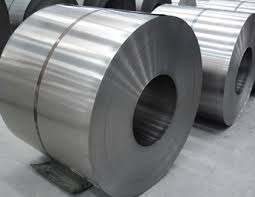 Before Steel Coil Can Be Coated
Before Steel Coil Can Be Coated
I think far too often we take for granted the many processes companies spend lots of time and resources (not to mention money) to give us products with features we come to take for granted. Like making sure metal such as steel does not rust and corrode after years of use. Before steel can even be painted, it goes through a series of steps to ensure the coating (painting) process is top of the line. And not just for today, but for many years down the road.
Unprotected steel corrodes quickly as oxidation activity consumes the metal, but this process is preventable by protecting the steel from water and oxygen, thus interrupting the oxidizing action. Surface coatings such as paint are permeable to water and oxygen and eventually permit rusting. Hot-dip galvanizing, however alloys molten zinc to steel metallurgically and forms an impenetrable barrier to water and oxygen. The zinc coating, which is much more durable than painted coatings which often chip during assembly or exposure to the elements, then acts as a sacrificial anode protecting the steel from rust and corrosion, even if the surface has been damaged. Unpainted galvanized steel parts can last 25 years or longer without maintenance.
Galvanized steel coil is defined as a carbon steel sheet coated with zinc on both sides. Continuous hot dipping, or electro-galvanizing are the two processes used to produce both galvanized sheet steel and steel coil. Generally speaking, the hot dip process consists of passing the steel through a bath of molten zinc. The electro-galvanizing process consists of the application of zinc by electrolytic disposition. The result is a layer of zinc tightly adhering to the base metal through an iron-zinc bonding layer.
Continuous hot dipping is the process used in the application of zinc to steel coils which will later be roll formed into steel roofing and siding.
A zinc coating is one of the most effective and economical methods of protecting bare steel from a corroding environment. The zinc not only serves as a barrier between the steel and the environment, it will sacrifice itself to protect the underlying steel sheet. Sacrificial, or galvanic protection occurs when two dissimilar metals are in contact and coupled with water and oxygen. Zinc corrodes preferentially to the iron in steel. This protection prevents corrosion of the steel at areas not covered with zinc. Thus, the spread of corrosion from cut edges, drill holes, etc. is minimized.
Hot-dipped Galvanized products are manufactured to ASTM A-653 specifications, and are available in a variety of coating weights such as G-90, G-60, G-40, and G-30. With galvanization, the larger the “G” value, the thicker the zinc coating is. For related reading: https://www.hansenpolebuildings.com/blog/2014/02/steel-siding-2/
Typical applications for Galvanized Steel Coil and Sheet products include exterior building products (like steel roofing and siding for pole buildings), ductwork, HVAC products, flashing, electrical boxes and other electrical products, roofing, doors, sashes, automotive parts, appliances, commercial and residential steel framing, truss plates (read more on truss plates here: https://www.hansenpolebuildings.com/blog/2011/10/metal-connector-plates-have-teeth/ ), metal building purlins, and any other products requiring a corrosion resistant material.
Once the galvanized steel is protected, it moves on to the painting process – so stay tuned for tomorrow’s blog to learn the many magical steps of steel coil coating.






